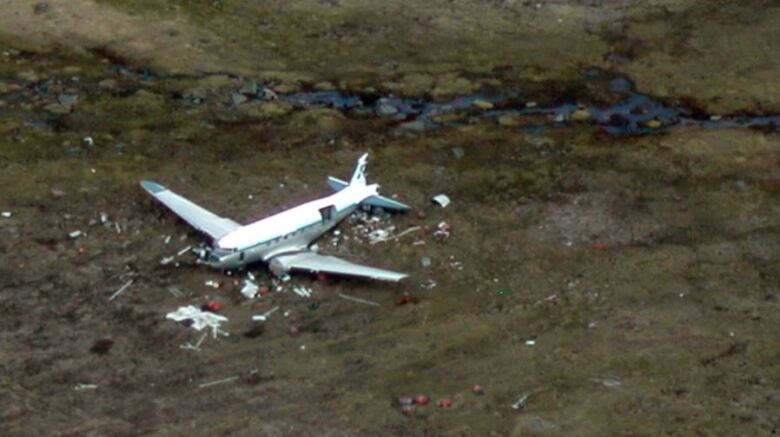Remembering the Baffin Island plane crash that could have killed 26, 42 years ago today
'There were quite a few plane crashes in the Arctic in those days. It was not unusual,' says John Amagoalik

On Nov. 3, 1975, some of the Inuit leaders involved in the creation of Nunavut were returning home from a meeting when their plane crashed all 26 people on board survived.
The charter flight was taking the early-negotiators home from the first land claims agreement conference hosted by Inuit Tapirisat of Canada, the national organization representing Inuit at the time.
It left Pond Inlet with plans to refuel in either Broughton Island, now Qikiqtarjuaq, or Pangnirtung, but bad weather forced the pilot to continueon to the final destination of Frobisher Bay, now Iqaluit, without stopping.
John Amagoalik, known as the 'Father of Nunavut' was on the flight. He remembers the day in his book, Changing the Face of Canada, published by Nunavut Arctic College.
"I was sitting near the front of the plane and the mechanic was sitting just a couple of rows ahead of me, so I said to him, 'Is there something wrong? What's wrong?' He turned around and his face was white and he said, 'We are going to crash! We are running out of fuel!'
The engine was just wind-milling ... It was snowing heavily, and I just could not see how we were going to make it in this kind of weather."

'Praying with our heads down'
Also on the flight was Meeka Kilabuk, Peter Cumming, a lawyer for the Inuit organization, and Mosesee Qappik, who is currently the mayor of Pangnirtung.
"When I learned we were going to crash all I could think of was my children and my wife because I loved them so," Qappik said in Inuktitut.
As we were descending, we were told to put our heads down and stay calm. When I looked at other passengers and it looked like we were all praying with our heads down. People were crying and our minds were in a very heavy state."

But the pilot was able to land theplane in a valley, skidding across the ground withlanding gear up. Amagoaliksays the pilot, Tony Westbrook,had been wiping condensation off the plane's windshield with his hand.
Immediately, all the passengers were told to run far from the plane, in case it caught fire, but again they were lucky, Qappik says.
They then returned to spend their first cold night in the plane. Weather delayed the rescue and both planes and helicopters were used to get the passengers home safely. Some spent a second night in the plane, eating what little food they'd brought with them.
Returning to the site
"Ever since it happened we haven't returned to the area. We'd like to go back, but we would need help, and it would be good if Inuit Tapiriit Kanatami could help support us."
Qappik says he would like to return as a group to the scene.
But while he has not been back, the plane is still where it landed and many others have visited the site.
Hunters use the wreck as a shelter and Nunavut's search and rescue volunteers try to spot it from the air during training exercises.
There are several airplane wrecks still in the area where they fell out of the sky.
"In those early days, a lot of times, pilots miscalculated distances and fuel, and sometimes they got lost. There were quite a few plane crashes in the Arctic in those days. It was not unusual," Amagoalik said in his book.
With files from Madeleine Allakariallak












_(720p).jpg)


 OFFICIAL HD MUSIC VIDEO.jpg)
.jpg)



























































































